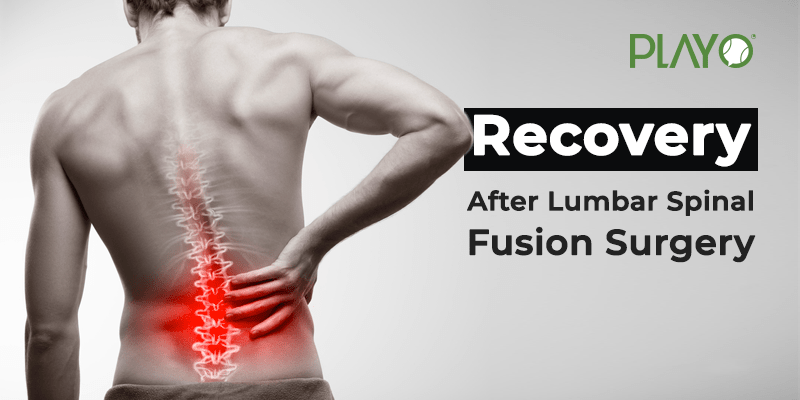Lumbar spine or lower back pain is one of the most common reasons, second only to a common cold, why people visit a doctor. The causes of lower back pain could be innumerable.
Common ones include tumours, scoliosis, spinal stenosis and degenerative disc disease to name a few.
A lumbar spinal fusion surgery is performed to stop the movement at a painful joint of the vertebral column when medicine, physical therapy and other treatments aren’t helpful.
Let’s take a quick look into what a lumbar final fusion means before we talk about the recovery phase.
In this procedure, two or more vertebrae of the lower spine are fused to grow together which removes mobility between them. To fuse the bones together, the intervertebral disc (forms a cushion between the two vertebrae) is removed and a bone graft or a metal/plastic cage is placed in between them.
This removes mobility between the fused bones and releases pressure from the nerves that in turn relieves pain. Depending on the medical expert and the patient, the technique of this surgery is determined.
The surgery can be performed in multiple ways:
- Anterior lumbar fusion: an incision is made through the stomach
- Posterior lumbar fusion: an incision is made through the back
- A combination of both: a combination of the first two
Recovery:
Recovery from a lumbar fusion surgery can be a challenging process and takes patience. Immediately after the surgery, the post-operative care is under the guidance of professionals and could vary from case to case basis.
Resting is one of the important components of the healing process. Extremely minimal activities like sitting up straight, walking in and out of bed under the guidance and stretching in bed should be done as prescribed to avoid muscle stiffness. Bending your back, twisting or lifting should be strictly avoided.
Some of these activities include:
- Ankle pumps: To help circulation move your ankle up and down as far as possible in a seated or lying down position. Remember not to move your legs.
- Quad sets: While lying on your back, tighten the muscles of your thighs by pushing the knee down. Hold for 5 seconds and relax.https://www.youtube.com/watch?v=x7Wyz64Dc4A
- Glutes setting: Lying down in the same position, squeeze your glutes together. Hold for 5 seconds and relax.
Once the fusion has set, it’s crucial to incorporate mild exercise for an effective recovery. It is natural to feel sceptic about exercise after the procedure but understand that actively promotes the healing.
Resting leads to muscle stiffness and weakens them and putting those muscles to work post the resting phase, strengthens them.
Rehabilitation includes stretching, strengthening your back and core muscles and conditioning. In the initial stages, these exercises should be performed under the strict guidance of a physiotherapist.
Do these exercises once the fusion matures significantly and only after you get a green signal from your physician:
Back strengthening exercises:
http://https://www.youtube.com/watch?v=J0InJCGphU0
Exercises to strengthen your core:
A full recovery may take anywhere between 6 months to a year or more. Make sure to eat a healthy diet. Eat food rich in calcium, essential vitamins and minerals.

Eat food rich in calcium, essential vitamins and minerals. Source.
A long recovery phase can put your patience to test and this is where your strength of character needs to show A full recovery is possible in most cases so don’t stress out!
Just take it easy and listen to your doctor and your physiotherapist.





0 Comments